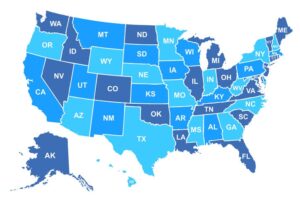Small Business Health Insurance Costs: What Can You Expect?

Offering health insurance benefits is an excellent way to draw talent to your company. However, the cost isn’t insignificant, so it’s essential to plan your budget carefully. One approach is to work with a health insurance broker in Santa Rosa to customize your options. Of course, you must first understand the various costs associated with employer-provided health insurance.
A Health Insurance Broker in Santa Rosa Breaks Down Costs
Group health insurance is cheaper than single insurance since more entities bear the cost. Larger companies have an advantage since they have hundreds or thousands of employees paying into the system. While small businesses use the same model, they may have to shoulder higher costs to offer similar benefits.
There are also regulations to consider. Depending on your state, you may have a legal obligation to offer health insurance if your workforce includes
50 or more full-time employees. Fortunately, there’s good news — the federal government offers programs to assist small businesses in providing health insurance without breaking the bank. A health insurance broker in Santa Rosa can
help you navigate this complex system and find the best deals.
Factors Affecting Costs
Several factors impact the price of insurance:
Your industryYour locationThe number of employeesEmployee risksPlan type
Your industry plays a role in cost because the work environment directly impacts employee health. If your workers routinely work with toxic chemicals, the risk of medical issues is higher. As a result, insurance companies may charge more.
Insurance markets vary by location. The cost of living and the number of competitors change between states and even cities, impacting your options. A health insurance broker in Santa Rosa should know the typical area rates, helping you identify reasonable premiums.
Additionally, the size of your workforce impacts expenses in two inverse ways. First, the more employees you have, the more diluted the risk pool, which can lower the cost per employee. Second, you’ll pay a higher total for a larger workforce since you must cover more people. With careful consideration, you can strike a balance between these opposed factors.
The demographics of your workforce also play a major role in price. If your employee pool skews older, you’ll likely have higher premiums since that demographic has a greater risk of health issues. Certain habits, such as smoking, also increase the risk of developing medical conditions, and premiums reflect this accordingly.
The one factor you have complete control over is the insurance plan type. There are four, with increasing costs and benefits:
While platinum plans have the most coverage and lower deductibles, they also have the highest premiums. A gold or silver plan may be better for your employees since they provide affordable basic coverage. A health insurance broker in Santa Rosa can help you evaluate your needs and find policies that fit.
Expenses To Consider
Premiums are the easiest to compare across plans because they’re a single payment due every month. However, there are other expenses to consider:
CopaymentsDeductiblesCoinsurance
While insurance companies ideally take on the majority of medical expenses, individuals are still responsible for paying a portion of every doctor’s appointment and prescription cost. These expenses, called copays, vary by prescription and appointment type. For instance, the copay for a specialist (such as a cardiologist) may differ from one for a general practitioner.
Deductibles significantly impact employees’ healthcare costs, and they’ve tripped up more than one insurance customer. Health insurance companies only start paying medical expenses once customers meet the deductible. Even then, most companies only pay a portion of the bill, an approach called “shared costs.”
Coinsurance describes the portion of medical expenses customers pay after meeting the deductible. Plans usually express this as a percentage. For instance, a customer may pay 30% coinsurance while the insurance company pays 70%. Your local health insurance broker in Santa Rosa can help you compare the various options and determine which provides the best savings.
What costs do you, as the employer, have to worry about? While employees must account for all the above expenses, you only need to pay a portion of the premium.
Why consider the deducible and coinsurance, then? Employees don’t have to join plans offered through your company — if they find another option through the health insurance marketplace, they can purchase that instead. However, you need a certain percentage of employees to sign onto your offered plan for it to work. It’s in your best interest to get as many employees on board as possible.
Your Health Insurance Broker in Santa Rosa Helps Customize Plans
Let Sackett Insurance be your health insurance broker in Santa Rosa. For more information on how to customize your small business insurance, call (707) 823-3689 or
request a quote online.


